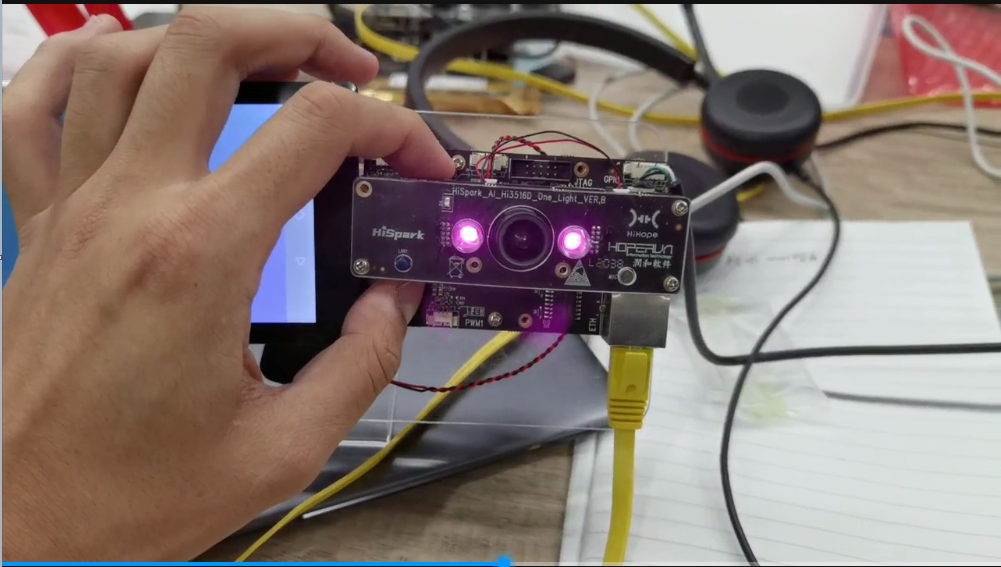At this stage, on the OpenHarmony standard device (version 3.1Beta), develop an application to achieve the effect of smart access control (temporarily flashing lights to indicate access control identification).
I haven't taken a picture of the complete operation yet, let's imagine for yourself. . .

1. Prepare the text (license plate) to print on white paper, aim the text at the camera, and simulate the car approaching the access control.
2. Click the custom button on the 3516 development board to trigger a photo and call Baidu Cloud to recognize the license plate.
3. For the recognition result, if the text is the license plate number of the current car owner, the pink light will flash 3 times, if not, the red light will flash 3 times. The simulated device responds to the license plate recognition results.
Sample scheme:
I'm too lazy to draw a picture, so I describe it in words. . .
1 Prepare the text (license plate) to print on white paper, aim the text at the camera, and simulate the car approaching the access control
2 By calling linux's own general GPIO driver, click the custom button (GPIO interrupt)
3 buttons to trigger the camera to take pictures
4 Encode the photo content base64, and call Baidu cloud text recognition service to identify the text content, refer to the use record of text recognition cloud service_sd2131512's column-CSDN blog
5 For the recognition result, if the text is the license plate number of the current owner, the pink light will flash 3 times, if not, the red light will flash 3 times. At the same time, the log is printed in the background to display the recognized text. The simulated device responds to the license plate recognition results.
For source code, please refer to:
Current problem, follow-up to continue to improve:
1. Did not use HDF to achieve
2. Currently using a standard system, this set of development boards should also be implemented using a small system
3. Distributed functions are not implemented, and a L0 lightweight device needs to be used later, using sensors to trigger identification, and using motor rotation to respond to the results
4. Try whether the built-in AI can recognize text without calling external AI cloud services.